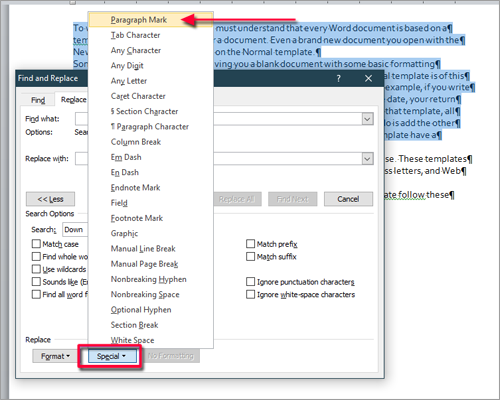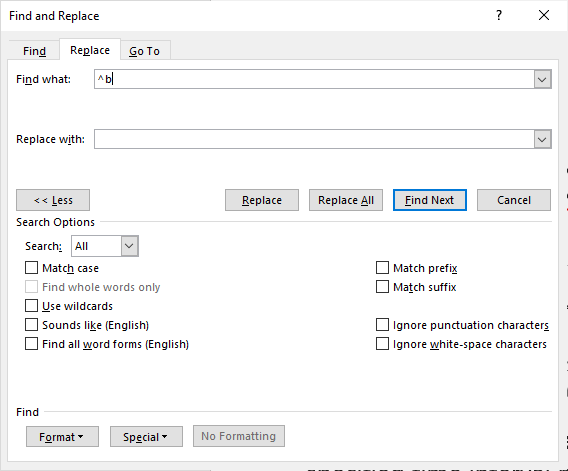Aug 14, 2007 In the meantime, and while we wait for our cappuccino, here’s a script that inserts a manual line break into a Microsoft Word document: Set objWord = CreateObject(“Word.Application”) objWord.Visible = True Set objDoc = objWord.Documents.Add Set objSelection = objWord.Selection. Manual line break Presumably it is akin to bumping the next word to the next line, as opposed to starting a new paragraph? Under Find and Replace I can search for one of these, but I cannot find any means of inserting one! I have a number of word documents that will be converted to HTML. It is required the paragraphs in the word documents should be converted to elements. After some tests with the Microsoft Office API's SaveAs method to convert the documents to the HTML, I realized the paragraphs with manual line breaks (break by 'Shift-Enter') couldn't be placed in a separated element, instead the.
Many people use justified paragraphs in their documents. These types of paragraphs align both the left and right edges of the text in the paragraph, much like what is done in many books and magazine articles. If you are one of these people, you may have noticed that when you add a manual line break (Shift+Enter) in a justified paragraph, Word forces the line to the full width of the paragraph. This can look very strange and ruin the appearance of your text.You can avoid this problem by default, however, by following these instructions:

- Display the Word Options dialog box. (In Word 2007 click the Office button and then click Word Options. In Word 2010 and later versions, click the File tab of the ribbon and then click Options.)
- Click Advanced at the left side of the dialog box and scroll down to the Layout Options. (See Figure 1.)
- Select the Don't Expand Character Spaces on a Line that Ends with SHIFT+RETURN checkbox.
- Click OK.
Figure 1. The Layout Options area of the Word Options dialog box.
Again, that will make this the default for manual line breaks.If you don't want the default option, there is another way to work around it. Enter a tab character just before the manual line break. When you do, Word makes the line with the tab left aligned, ignoring the justification alignment you applied to the whole paragraph.

 -->
-->Inserts a page, column, or section break.
Syntax
expression. InsertBreak( _Type_ )
expression Required. A variable that represents a Selection object.

Parameters
| Name | Required/Optional | Data type | Description |
|---|---|---|---|
| Type | Required | WdBreakType | the type of break to insert. The default value is wdPageBreak. Some of the WdBreakType constants may not be available to you, depending on the language support (U.S. English, for example) that you have selected or installed. |
Remarks
When you insert a page or column break, the break replaces the selection. If you don't want to replace the selection, use the Collapse method before using the InsertBreak method.
Note
When you insert a section break, the break is inserted immediately preceding the selection.

Example
This example inserts a continuous section break immediately preceding the selection.
See also
Support and feedback
Manual Line Break In Word One
Have questions or feedback about Office VBA or this documentation? Please see Office VBA support and feedback for guidance about the ways you can receive support and provide feedback.